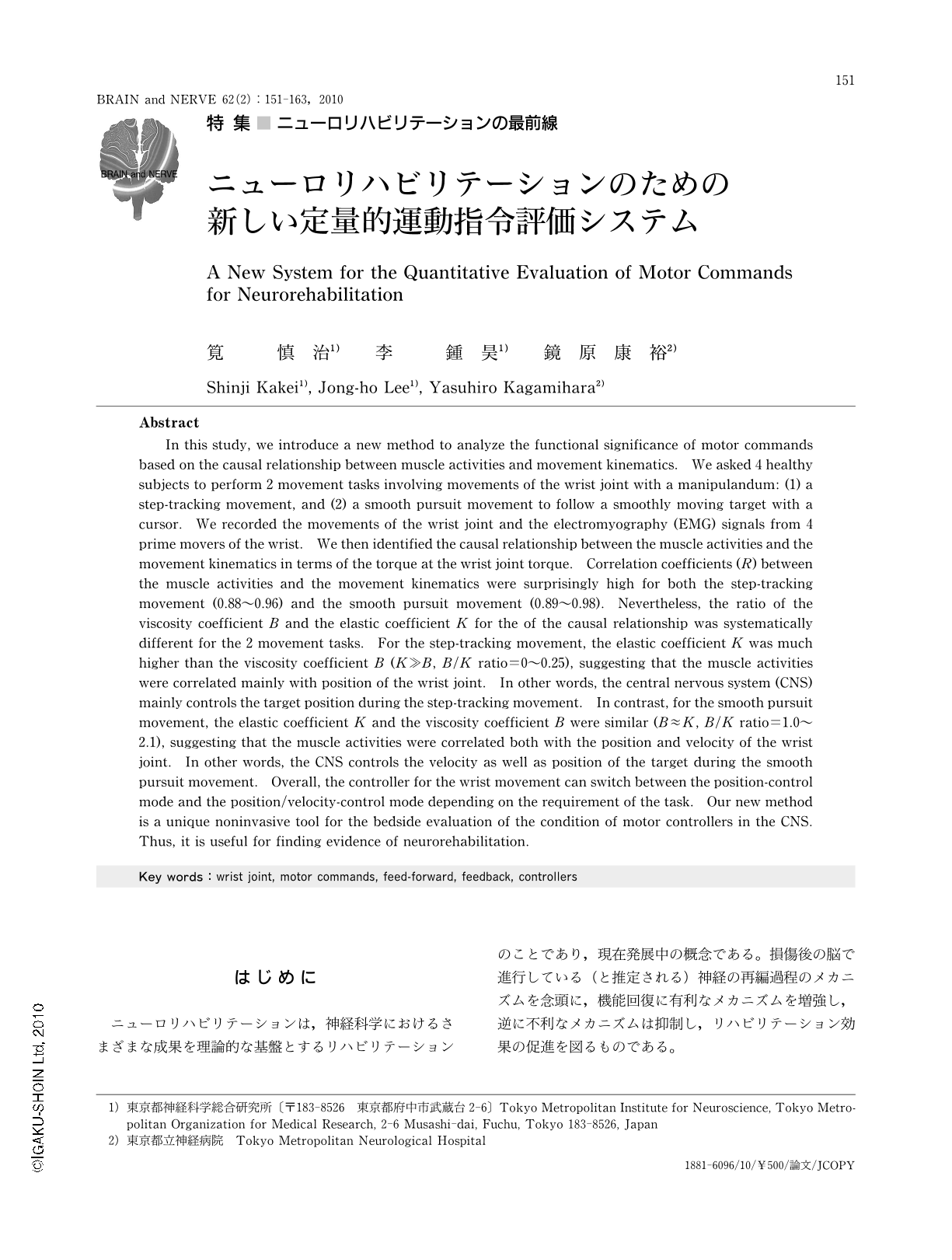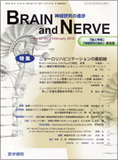Japanese
English
- 有料閲覧
- Abstract 文献概要
- 1ページ目 Look Inside
- 参考文献 Reference
はじめに
ニューロリハビリテーションは,神経科学におけるさまざまな成果を理論的な基盤とするリハビリテーションのことであり,現在発展中の概念である。損傷後の脳で進行している(と推定される)神経の再編過程のメカニズムを念頭に,機能回復に有利なメカニズムを増強し,逆に不利なメカニズムは抑制し,リハビリテーション効果の促進を図るものである。
古典的には,神経細胞は再生せず軸索の伸長さえ限定的であり,中枢神経系の再編能力は極めて限られていると信じられていた。しかし近年,この常識は大きく修正された。反証となる数々の発見が積み重ねられたからである。例えば,霊長類の脳でもリハビリテーションによる機能地図の再構築が起こることが示されている1)。また,海馬歯状回では生涯にわたって神経細胞の新生が続いていることは,実は1960年代に既に発見されていた2)。これらの発見は,中枢神経に未知なる再編能力があることを強く示唆する。
臨床的にはなんらかの方法でその潜在能力を呼び覚まし,そのいわば覚醒状態を利用して再学習に導くことが未来のニューロリハビリテーションの目標となる。その最新の方法論とその基盤については,既に本号の特集に詳しく述べられているので他稿を参照されたい。
本稿では,ニューロリハビリテーションの本流から少し引いた位置に立ち,リハビリテーションを行ううえで見過ごされてきた運動機能の評価の問題を取り上げる。その問題に対するわれわれのアプローチと,ニューロリハビリテーションに新しいエビデンスを提供する試みについて紹介する。
Abstract
In this study,we introduce a new method to analyze the functional significance of motor commands based on the causal relationship between muscle activities and movement kinematics. We asked 4 healthy subjects to perform 2 movement tasks involving movements of the wrist joint with a manipulandum: (1) a step-tracking movement,and (2) a smooth pursuit movement to follow a smoothly moving target with a cursor. We recorded the movements of the wrist joint and the electromyography (EMG) signals from 4 prime movers of the wrist. We then identified the causal relationship between the muscle activities and the movement kinematics in terms of the torque at the wrist joint torque. Correlation coefficients (R) between the muscle activities and the movement kinematics were surprisingly high for both the step-tracking movement (0.88~0.96) and the smooth pursuit movement (0.89~0.98). Nevertheless,the ratio of the viscosity coefficient B and the elastic coefficient K for the of the causal relationship was systematically different for the 2 movement tasks. For the step-tracking movement,the elastic coefficient K was much higher than the viscosity coefficient B (K≫B,B/K ratio=0~0.25),suggesting that the muscle activities were correlated mainly with position of the wrist joint. In other words,the central nervous system (CNS) mainly controls the target position during the step-tracking movement. In contrast,for the smooth pursuit movement,the elastic coefficient K and the viscosity coefficient B were similar (B≒K,B/K ratio=1.0~2.1),suggesting that the muscle activities were correlated both with the position and velocity of the wrist joint. In other words,the CNS controls the velocity as well as position of the target during the smooth pursuit movement. Overall,the controller for the wrist movement can switch between the position-control mode and the position/velocity-control mode depending on the requirement of the task. Our new method is a unique noninvasive tool for the bedside evaluation of the condition of motor controllers in the CNS. Thus,it is useful for finding evidence of neurorehabilitation.

Copyright © 2010, Igaku-Shoin Ltd. All rights reserved.


